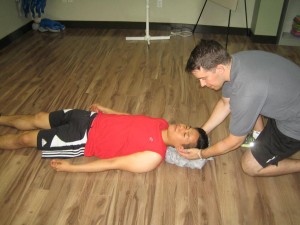There are times when we are faced with the inevitable life and death situation, and the only thing that matters is to survive, regardless of what lies ahead of us. Dealing with medical emergencies may often result to a life-threatening or life-limiting situation, where you have to decide what to do in order to maintain the utmost quality of life. Always remember that knowing the right thing to do can help someone’s life and can be very reassuring to the needs of the person requiring medical assistance.

Knowledge about basic first aid and CPR is essential, not only for professional medical providers, but also for ordinary people, because it helps increase our survivability during times of medical emergencies.
The most common types of medical emergencies include the following:
- Bones and muscle injuries
- Burns and scalds
- Bodily Injuries
- Bleeding
- Poisoning
- Seizures
- Stroke
- Arrest
- Difficulty of breathing
- Allergies
- Animal stings and bites
- Choking
- Heat-related illnesses
While these usually occur at home, these can also happen anytime, anywhere, so it is important to have knowledge about basic first aid techniques to help increase survivability of a patient.
Basic things to do when an emergency occurs:
- Do not get nervous and always be aware of the situation.
- Keep calm and be ready to assist the patient.
- Always remove yourself and the victim away from the site of the danger prior to administering any kind of first aid.
- Look at the bigger picture of what is actually happening – assess the location, the patient, as well as what could likely cause the problem.
- Call the emergency hotline before giving first aid to the victim/s.
- If there are multiple victims, always administer first aid to the most critical and life-threatening condition first, prior to the ones with minor injuries or bleeding.
- Prepare to administer basic CPR if the patient is unconscious, not responding to touch or voice, and is not breathing.
- If the patient has injuries to the bone – such as the extremities, the head, neck or spinal cord – it is best not to move the patient until professional help arrives. Using a splint can also help immobilize the affected site to prevent further injuries from happening.
These are just some of the basic things to do in the event of an emergency. Check out https://basicfirstaid.ca/ for more valuable first aid tips.
Related Video On Medical Emergencies First Aid Training:
Sources:
“Dealing with Emergencies.” Healthlink BC. Retrieved online on September 27, 2014 from http://www.healthlinkbc.ca/healthtopics/content.asp?hwid=emerg#hw154539
“First Aid & Emergencies: Legal Protection.” Web MD. Retrieved online on September 27, 2014 from http://www.webmd.com/first-aid/tc/dealing-with-emergencies-legal-protection